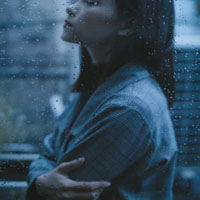Dreaming during COVID-19: the effects of a world trauma

Submitted: March 15, 2021
Accepted: July 29, 2021
Published: August 24, 2021
Accepted: July 29, 2021
Abstract Views: 3656
PDF: 912
HTML: 89
HTML: 89
Publisher's note
All claims expressed in this article are solely those of the authors and do not necessarily represent those of their affiliated organizations, or those of the publisher, the editors and the reviewers. Any product that may be evaluated in this article or claim that may be made by its manufacturer is not guaranteed or endorsed by the publisher.
All claims expressed in this article are solely those of the authors and do not necessarily represent those of their affiliated organizations, or those of the publisher, the editors and the reviewers. Any product that may be evaluated in this article or claim that may be made by its manufacturer is not guaranteed or endorsed by the publisher.
Similar Articles
- Katharina T.E. Morken, Morten Øvrebø, Charlotte Klippenberg, Therese Morvik, Elisabeth Lied Gikling, Antisocial personality disorder in group therapy, kindling pro-sociality and mentalizing , Research in Psychotherapy: Psychopathology, Process and Outcome: Vol. 25 No. 3 (2022): SPECIAL ISSUE: "Group psychotherapy: between settled benchmarks and new horizons"
- Elham Qanbari Alaee, Omid Saed, Sahel Khakpoor, Reza Ahmadi, Mahsa Ali Mohammadi, Majid Yoosefi Afrashteh, Zekrolah Morovati, The efficacy of transdiagnostic cognitive behavioural therapy on reducing negative affect, anxiety sensitivity and improving perceived control in children with emotional disorders - a randomized controlled trial , Research in Psychotherapy: Psychopathology, Process and Outcome: Vol. 25 No. 1 (2022)
- Kanika Mehrotra, Poornima Bhola, Geetha Desai, Contextualizing motherhood in persons with borderline personality vulnerabilities: cultural adaptation of the Parent Development Interview-Revised in an Indian context , Research in Psychotherapy: Psychopathology, Process and Outcome: Vol. 26 No. 1 (2023)
- Gloria Fioravanti, Martina Nicolis, Angus MacBeth, Giancarlo Dimaggio, Raffaele Popolo, Metacognitive interpersonal therapy-eating disorders versus cognitive behavioral therapy for eating disorders for non-underweight adults with eating disorders: study protocol for a pilot pre-registered randomized controlled trial , Research in Psychotherapy: Psychopathology, Process and Outcome: Vol. 26 No. 2 (2023)
- Saryn R. Levy, Mark J. Hilsenroth, Francine Conway, Jesse Owen, Patient personality characteristics and therapeutic integration: treating borderline personality and emotionally dysregulated-dysphoric personality features , Research in Psychotherapy: Psychopathology, Process and Outcome: Vol. 25 No. 2 (2022)
- Christin Janine Grevenhaus, Christoph Flückiger, Lea Theimer, Cord Benecke, Does technique matter? A multilevel meta-analysis on the association between psychotherapeutic techniques and outcome , Research in Psychotherapy: Psychopathology, Process and Outcome: Vol. 27 No. 2 (2024)
- Stefania Cella, Annarosa Cipriano, Mara Iannaccone, Paolo Cotrufo, Identifying predictors associated with the severity of eating concerns in females with eating disorders , Research in Psychotherapy: Psychopathology, Process and Outcome: Vol. 20 No. 1 (2017)
- CV Vijayapriya, Rameshbabu Tamarana, Effectiveness of internet-delivered dialectical behavior therapy skills training on executive functions among college students with borderline personality traits: a non-randomized controlled trial , Research in Psychotherapy: Psychopathology, Process and Outcome: Vol. 26 No. 3 (2023)
- Gabriela Pap, Fritz Lackinger, Gerhard Kamp, Henriette Löffler-Stastka, Analysis of a dream series by the Dream Coding System developed by Ulrich Moser , Research in Psychotherapy: Psychopathology, Process and Outcome: Vol. 24 No. 2 (2021): SPECIAL ISSUE "Working on dreams, from psychotherapy to neuroscience"
- Alexandro Fortunato, Annalisa Tanzilli, Vittorio Lingiardi, Anna Maria Speranza, Psychodiagnostic Chart-Child (PDC-C): a valid and clinically sensitive diagnostic tool for patient-tailored intervention planning , Research in Psychotherapy: Psychopathology, Process and Outcome: Vol. 25 No. 1 (2022)
<< < 1 2 3 4 5 6 7 8 9 10 > >>
You may also start an advanced similarity search for this article.

 https://doi.org/10.4081/ripppo.2021.541
https://doi.org/10.4081/ripppo.2021.541





